
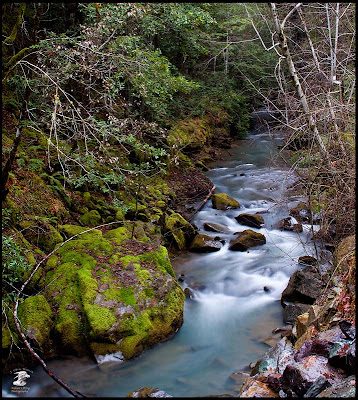
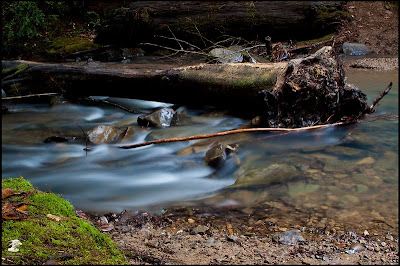
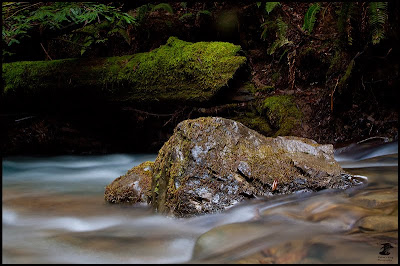
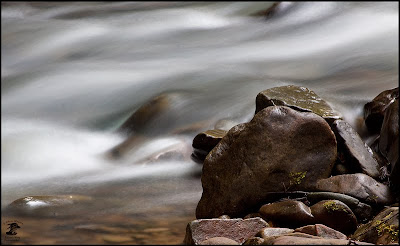
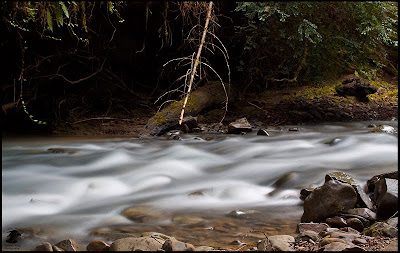
Greetings to all,
It's old news to many and its almost or probably a cliche' but some people like to blur their waterfalls or water so it looks like flowing silk. It's not that difficult to do it just requires the right water, weather and equipment. For weather the best times are when it is overcast, cloudy or foggy. The other circumstance is when there just plain isn't a lot of bright light like early morning or late afternoon or being in a dark shaded area like a canyon. Equipment wise you can decrease the light to help this along by the use of a filter called a ND or neutral density filter. These are sold in varying powers that cut down on the amount of light reaching the light sensor in the camera. These typically come in one , two or three stop densities with some expensive ones even cutting out more light. So by placing one of these filters in front of your lens you need to increase your exposure time which is just what you need to do in order to blur water out to a silky flow.
To blur water typically you need to blur it with a shutter speed of 1/15 of a second or longer depending upon the water flow. This means you need to use a tripod or other camera support such as a ground pod or bean bag placed upon something. Usually in order to get such a slow shutter speed you are going to have to put your camera on Manual or Aperature Priority and choose an F stop that is closed down as much as possible for the lighting conditions. I start by making a check with the f stop at about f11 and keep closing down further and further until I get the look I like. Often times in the dark canyons I'm shooting in I will get an exposure of f22.0 at around thirty seconds. You really need a solid tripod for that.
When shooting look for interesting rocks, logs and stream flows to help you with your compositions. Try finding things that will work as anchors in your foreground of the image as well as diagonals that will lead the viewer into the image. Above all experiment and have some fun. Check your histogram often to see what kind of results you are getting. Personally I tend to like to underexpose my images just a little bit as the streams where I live have very dark rocks in them. Be careful of getting direct sunlight into your compositions as there is usually too much contrast for your camera to be able to handle.
I shot these images today as kind of a challenge to myself. I took only one lens a 28- 105 zoom my 50D a remote release to keep things steady and a ground pod. The conditions were perfect for what I wanted to do. It was cloudy and getting ready to rain. I slid down into the creek bottom and just had fun looking for interesting rocks, logs and riffles to shoot images of. By the time I had walked up stream awhile it was strarting to rain and I hightailed it out of there. Most of my exposures were taken at F22.0 from 3.2 to 10 seconds. There is only one shot that I did differently and that was the one cropped to a panorama. The exposure for that image was F3.5 @ 1/10th of a second.
The other thing you can do is to shoot multiple images of the same scene without moving the tripod and then later combine them so that you end up with a sliky smooth look combined with the fast stop action look of a faster shutter speed. Just be sure to not move your camera or tripod when changing the cameras settings.
So get out there and shoot some images of this glorious planet that God has created for us and above all have some fun.
chris



























